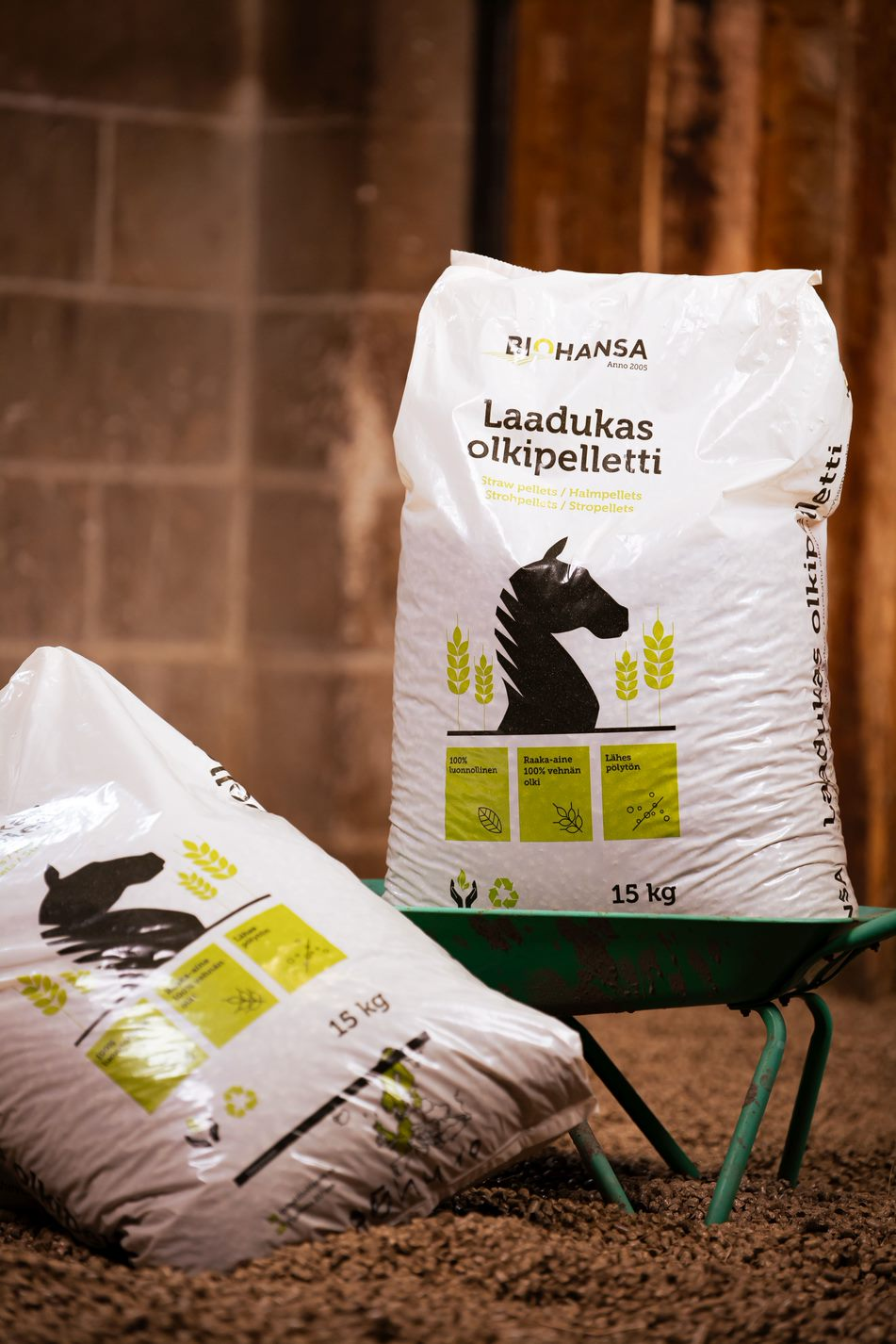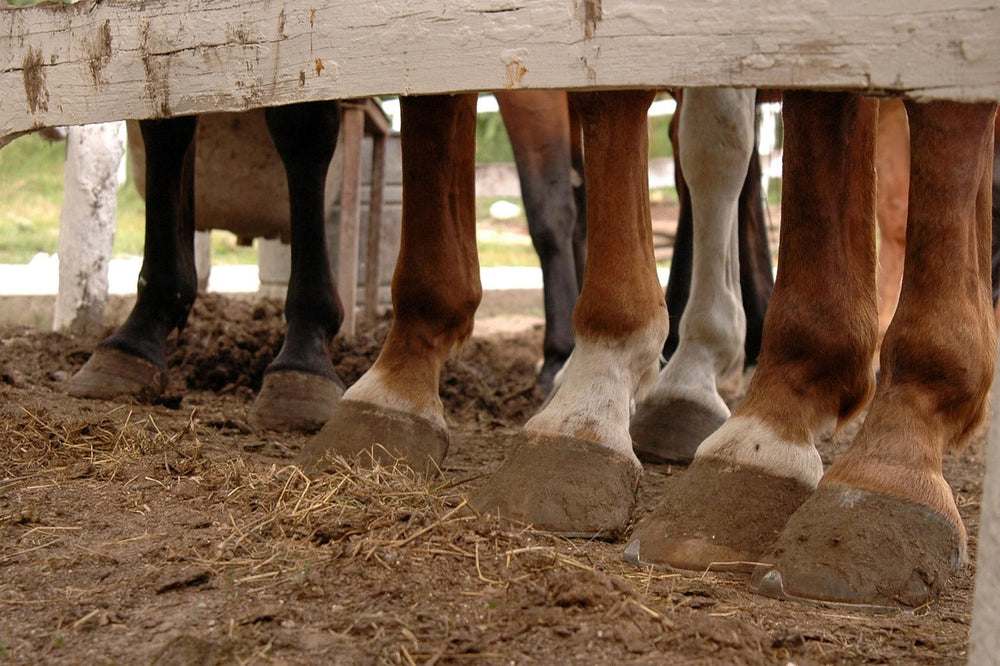
Beddings for stables and animal shelters have a significant impact on horses' well-being, stable cleanliness, manure management, and environmental footprint. Choosing between traditional and new bedding materials requires considering absorbency, dust levels, recyclability, and costs.
Biohansa offers a wide range of bedding options, including traditional alternatives but also new, more ecological materials. What makes a bedding an ecological choice?
Generally speaking, ecology is primarily influenced by the origin and production of the material. Utilizing industrial by-products or local production reduces transport and raw material costs. In addition, the faster and cleaner a material decomposes or composts, the better its effect on manure management and waste bedding processing.
In autumn, a horse’s legs endure a lot due to wet weather, and the quality of the bedding is a significant part of preventive care. For example, hemp and flax are best suited for sensitive skin and legs prone to moisture. Wood fiber, on the other hand, works excellently in stable environments where a combination of high absorbency and good air quality is desired.
Peat can still serve as an option, but its environmental impact and maintenance needs make it a secondary choice for many.
Different types of bedding
Wood fiber
Wood fiber is made from forest industry by-products such as bark, chips, or other process residues. The fiber has high absorbency and good moisture retention capacity. Better absorbency means that bedding is often needed in smaller quantities, making it more economical.
It also has an almost dust-free (or low-dust) structure, which improves indoor air quality in the stable and reduces respiratory irritation for both horses and humans. The uniform texture makes handling and cleaning easier.
Wood fiber may require some adaptation in stable cleaning routines, especially when switching from traditional materials.
Flax and hemp bedding
Flax is a naturally antibacterial material that helps bind odors. In addition, flax has good absorbency and moisture retention properties. It absorbs moisture well and keeps the bedding layer drier.
It is less dusty than many traditional bedding materials and is very beneficial for animals sensitive to respiratory issues. Flax decomposes relatively quickly, which helps in manure management and waste bedding handling.
Flax bedding is often cheaper than equivalent-quality hemp, which helps with cost efficiency.
Likewise, hemp also has good absorbency. It is often a very dry material and low in dust. Hemp decomposes fairly quickly, making manure handling easier. In some cases, hemp may require slightly larger amounts and careful spreading, depending on the horse's size, the stable's humidity balance, and ventilation.

Practical comparison and recommendations
In summary, wood fiber and hemp stand out with their excellent absorbency and low waste bedding amounts. Flax bedding provides a good balance between price and performance, especially due to its antibacterial and low-dust properties.
Traditional beddings such as sawdust, straw, and peat can be affordable and easily available, but they often have lower absorbency, and peat poses environmental challenges.
Try the bedding first on a smaller scale. Start with one stall, observe absorbency, dust, and the amount of waste bedding. New materials may work optimally even with a slightly thinner layer if absorbency is good enough.
Consider ventilation and humidity conditions. Air circulation and stable temperature also affect material performance. In some situations, flax or hemp can work well as a mixture with other bedding materials.
Ultimately, delivery costs, material costs, cleaning routines, and manure waste management all affect total expenses.
Bedding tips for autumn
With the wet weather of autumn, make sure the stall is bedded thickly enough. Moisture should remain in the lower layers. Ensure ventilation and floor drying. If the stable is poorly ventilated, no bedding will work perfectly.
Check hooves and pasterns daily. Even small skin injuries can worsen quickly during the wet season. Combine bedding with a good hoof care routine.
The ecological nature of bedding is based on how little it burdens the environment throughout its life cycle. Ecological bedding also supports horses’ well-being, stable cleanliness, and responsible manure management.
Ecological bedding materials such as wood fiber, flax, and hemp provide good alternatives to traditional materials. In Biohansa’s selection, these newer materials are gaining popularity, offering better absorbency, less waste, compostability, and improved stable air.
Switching to a new bedding material may not be effortless and requires experimentation, but in the right environment and with good use, ecological bedding materials can bring both economic and environmental benefits to the stable and horses.






